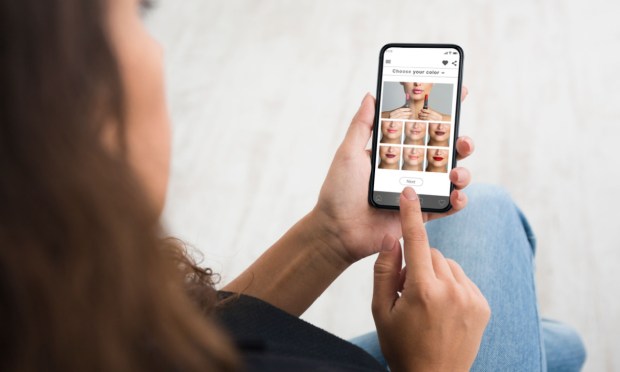
L’Oréal is seeing a rapid uptick in adoption of virtual try-ons, as consumers increasingly seek out mixed-reality technologies that bring real-world-like immersion to online shopping.
The personal care products giant shared on a call with analysts discussing its 2023 financial results Friday (Feb. 9) that its consumer-facing augmented reality (AR) technology investments are paying off.
“If I just take what I call the services, so like the virtual try-ons of our products, which we do through our ModiFace start-up in Canada, we’ve had over 100 million sessions of digital try-ons in 2023 versus 40 in ’22,” L’Oréal CEO Nicolas Hieronimus said. “So, it’s augmenting. It’s becoming part of consumers’ habit.”
Hieronimus noted that the company initially began to see an uptick in adoption in the early stages of the pandemic, when consumers could not try on products in person, but that even now, consumers’ usage of the technology continues to grow and expand to new categories.
“It’s really increasing. It was initially mainly make-up, and now, it’s being used also for skincare.”
The brand acquired augmented reality (AR) company ModiFace in 2018 and now offers virtual makeup and hair color try-ons as well as AR shopping via the technology, both through its direct channels and via external retailers such as Amazon.
Many consumers are interested in shopping experiences that incorporate mixed-reality technology, such as AR and virtual reality (VR), according to PYMNTS Intelligence’s report “How We Will Pay Report: How Connected Devices Enable Multitasking Among Digital-First Consumers,” which drew from a survey of more than 4,600 U.S. consumers.
For instance, the study found that, among the 95% of consumers who own or have in their homes at least one connected device, 38% said they are very or extremely interested in using virtual technology to see how items look in their room before buying them, and 6% are already doing this. Plus, 32% said they’d be similarly interested in the ability to use VR technology to buy retail products that are in a physical store from their home or office, and 4% already do this. These technologies blur the lines between the physical and digital worlds.
The developments of new consumer technologies are expediting the process of integrating mixed reality into the eCommerce journey. Take, for instance, tech giant Apple’s recent release of its Vision Pro headset, with 600 new apps and games including many commerce-integrated experiences from leading brands and retailers.
Yet even as shopping experiences become increasingly omnichannel, consumers continue to seek out real-world experiences. The integration of mixed reality into eCommerce platforms should complement, rather than replace, traditional retail journeys.
“Most people — as in mostly all of them — don’t want to give up the physical world to live mainly via avatars in a virtual one,” PYMNTS’ Karen Webster wrote in a feature last year. “Even though most — as in mostly all of them — very much want to use technology to improve their interactions with people and businesses in the physical world where they live right now.”